Welcome to Volume II of The Bilas Index, the most comprehensive and insightful evaluation of basketball accomplishment and future performance known to mankind. As you know, The Bilas Index is generated through careful data analysis of recognized analytics and on-court scouting, all washed through the stunningly powerful gray matter of The Bilastrator, whose smooth and knowledge-filled cranium holds more basketball wisdom than any other source on this, or any, planet.
We (the royal "we") have witnessed close to half of a basketball season, and the landscape is quite clear. There are some very good teams out there that have the chance to improve and seize control of the top tier of the game. However, there are no historically dominant teams like the game had in 2015 and other years. Some might say that is mediocrity, but The Bilastrator does not agree with such sentiments. This season might not have powerful teams that are the recognized title favorites, but there are reasons for that: The game has taken a step back in overall talent, and the game has been negatively affected by officiating.
It is not attributable to the "one and done" rule or transfers. It is a perfect storm of a few factors, but it is a cyclical blip, like a weak NBA draft year. Transfers are not the problem, as transfers stay in the game (there are a ton of terrific transfers sitting out this year). The game had top talent that did not return and was not replaced with comparable new talent, and that has happened in Power 5 and non-Power 5 conferences. It has happened before, and it is not the new normal.
Coupled with this cyclical talent drain has been a drop in the quality of play in the early season. The level of play to this point in the season has been lower than in the past three seasons, and there are several reasons for that, which will be explained below. The bottom line? By the time March arrives, the top tier of the best teams will have separated themselves not by being overpowering, but by being the most consistent. The NCAA tournament will be as it always is, a wild ride that is full of upsets but also full of Power 5 teams left standing. The only question will be the number of party crashers from non-Power 5 conferences, and just how far a few of them can go.
Of course, you will hear about how difficult the selection committee's job will be in a year when "everybody can beat everybody." That is nonsense. If there is relative "parity" and it is not clear to those that are not basketball literate exactly which teams are the best teams, all the committee has to do is count quality wins. When things appear even on the floor, the more quality wins a team has versus its perceived equal, the higher the seed. Pretty simple. If the basketball community believes that any team "can win on a given day," the separating factor among equal teams is just how many "given days" you have had. Every game counts.
Now, the quality of play this season. Competition has been great, and teams have battled and competed at a high level. Scoring is significantly down, shooting percentages are down and your eyes tell you that play has not been at the highest level. Clearly, by any reasonable basketball standard, the level of play has not met the standard set and evident in the past few seasons. There are a few important reasons for this, and here they are:
The 3-point line has been moved back to just over 22 feet, the FIBA international distance. The line was moved back from 21 feet, 9 inches, where it had been for 10 years. When the line was moved back from 19 feet, 9 inches (where it had been for 21 years), there was an expected drop in shooting percentages, just as there has been every time a line has been moved. This year, we have seen a similar drop, but that expected drop does not fully explain the overall drop in the level of play across the board.
Another factor is the talent drop. Talent is down, and it is down across the board. Several of the game's standard-bearers are not as good as the game traditionally expects. That has been a contributing factor but not the biggest factor. That talent is down does not mean the level of play should experience this much of a drop.
The most important and impactful factor in the drop in level of play has been officiating. Let The Bilastrator be clear: The most important factor has not been officials, it has been officiating. The officials in college basketball are excellent, and they are well-trained, well-paid and highly competent professionals who have performed and continue to perform consistently at a high level. The officials, generally and overall, do a great job.
However, officials are not allowed to call what they want, when they want. They answer to their bosses, the conference supervisors and the NCAA supervisor of officials. The officials also answer to the rules committee and the directives and emphases thrust upon them. To this point in the season, the supervisors and the rules committee have failed the officials and, by extension, have failed the game. Too many unnecessary emphases and interpretations have been put on the officials, and it has taken their attention off of what is most important ... no ... what is absolutely vital to a high level of play: calling the clear fouls in front of them.
Many well-intentioned people and committees put forth initiatives to promote "freedom of movement" and return it to the college game. The game had become far too physical, and actions to impede ball handlers and cutters that were and are fouls had been ignored for too long and had gone uncalled. In a game in which players were getting better and better, more and more athletic, with a shorter shot clock and a 3-point line, scoring was annually going down and had reached historic lows. The past few years, those in charge of the game had done a fabulous job of addressing the fouling and impeding of ball handlers and cutters. But this year, those in charge of the officials have not been as vigilant as in the past few years.
With the freedom of movement initiative, officials were mandated (not asked -- mandated by their superiors) to call the clear fouls being committed, especially the impeding of ball handlers and cutters by illegally disrupting rhythm, speed, balance and quickness. Officials did a great job of consistently calling hand-checking, arm bars on ball handlers and illegal contact in the post and on shooters. As a result, scoring went up significantly, and went up without the gains coming from free throws. In short, the game greatly improved, and players and coaches adjusted nicely. The freedom of movement initiative was far less painful than expected, and the gains were clear. The credit belonged to the supervisors for being vigilant and resolute in executing the mandate, and to the officials for doing exactly what they were required to do.
Well, the gains made have been lost this season. Freedom of movement in college basketball is dead. Actions that were clear fouls over the past three seasons are being allowed, including hand-checking and arm bars to illegally impede ball handlers, and illegal contact on cutters to impede and disrupt. Post play has become more physical. Yet, foul calls are down. Again, foul calls are down. Fouls are not down, fouls are way up, and fouling is not defense. Officials are not calling clear fouls this season. There is no more important factor in the level of play than the substantial erosion in freedom of movement.
Again, to be clear, this is not a problem with officials, it is a problem with officiating. The responsibility for this erosion is on the shoulders of the administrators, the supervisors of officials and conference commissioners. Until this substantial erosion is addressed and fixed, we will not see the level of play improve. It is that simple.
Lastly, a word on the officials themselves. College basketball has an excellent corps of officials in today's game. If you believe otherwise, please watch game film from two decades ago and earlier. Officiating was horrifyingly bad back then as compared to now. Officials have never been better than they are today. Officials are more professional, in better condition and on top of far more today than ever before. Yet, the game has demanded more than ever from officials, too. Truthfully, it demands too much. This year, officials are having to police flopping and the coaching box, two meaningless things that have taken away from primary duties. Officials have to be arbiters on the floor and must also be appeals judges on replay. The demands on officials are, quite frankly, ridiculous. The officials should be allowed and encouraged to focus more on the play on the floor rather than the temporal and silly whims of a committee. We, as a game, continue to get in the officials' way, and all of the demands upon officials have had a negative impact upon officiating and on the level of play.
That is not to say we cannot differ with a call here or there, or debate a rule. The officials are paid professionals, and their calls on the floor are the law. The officials' calls are final and not subject to change due to fan opinions or media commentary from the sideline. There are a few officials out there who feel that those not wearing stripes have no business opining on their calls and should remain silent (unless agreeing with every call). Well, they are wrong in that belief. If the actions of coaches and players can be dissected on the floor, so can officials' calls be similarly discussed and opined about. Those officials who believe otherwise are wrong.
Despite some clear issues facing the game, expect nothing but fun and enjoyable chaos as we head toward March. The Bilastrator told you in October that this season looked very much like the 2010 and 2011 seasons with no dominant teams. There are a handful of teams that can reach a championship level of consistency, but no team out there is dominant this season. That can and will be delicious as we move forward. Here is Volume II of The Bilas Index. You're welcome.

The Blue Devils have had one bad outing, against Stephen F. Austin in December. Otherwise, Duke has been as consistent and as good on both ends of the floor as any team in the country. While Duke is not an overpowering or dominant team, neither is the ACC nor the nation at large. On a relative basis, Duke might be in a better position to win the ACC and the national championship as in any year Coach K has been in the big chair. Vernon Carey, Jr. has been the best and most efficient player in the country and is the clubhouse leader for national player of the year. Tre Jones is right with Michigan State's Cassius Winston and Oregon's Payton Pritchard as the best point guard in the country, except Jones is the best defender of all the point guards. Duke is the deepest team and the best defensive team.

When healthy, Gonzaga is even with Duke as the overall favorite to claim "best team." The Zags are just as good offensively, but Duke is better on the defensive end and on the glass. Mark Few and his staff have done a remarkable job given the turnover on the roster. Corey Kispert is becoming a reliable star, and Killian Tillie is among a handful of the best big men in the country while essentially playing on one leg. Tillie is a great shooter and an exquisite passer who needs only to stay healthy to be more widely recognized as such. A revelation has been transfer Ryan Woolridge, who is an outstanding passer, defender and playmaker and has done a fabulous job taking over for Josh Perkins.
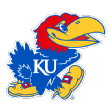
Kansas is an excellent defensive team that protects the rim and rebounds well. The offense is good and getting better, but the Jayhawks lack consistent scoring threats that Bill Self could usually rely upon in the past. Devon Dotson outside and Udoka Azubuike inside have to be consistent threats and productive scorers game to game, and Kansas needs production from other sources to be a title team. The key is whether Ochai Agbaji will blossom into a reliable, star-caliber player. He has it in him, will it come out by March? If it does, Kansas can win it all. Another scoring threat is Isaiah Moss, who can knock down perimeter shots and take pressure off of the interior. As the Kansas big men get used to handing double-teams, the Jayhawks' offense will benefit.

The Spartans will not win the title if they play like they did in the first 13 games. But, Michigan State can and will get significantly better, and if the performance against Illinois is any indication, the Spartans are in the hunt. The pieces are there, the experience in current roles is not, but it's growing. Preseason expectations of the players on this roster were not off; the value of the players lost from last year's team was way off. Losing Kenny Goins, Matt McQuaid and Nick Ward was a huge deal and left a void in toughness, communication, defense and the understanding of what it takes to win. Michigan State will still get there, but the contributions of those players, who led the Spartans to the Final Four, was taken a bit for granted.
Cassius Winston suffered an unspeakable tragedy, Josh Langford was lost for the year to injury and Aaron Henry struggled early in an expected star's role. Plus, Michigan State has played a very difficult schedule, with a more difficult Big Ten slate ahead. The Spartans are No. 4 in The Bilas Index based upon what they will be, not just on what they are right now. Yet, what they are right now is pretty darn good.
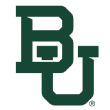
5. Baylor Bears
The Bears might be the most undervalued team in The Bilas Index. Only a poor finish against Washington in Alaska stands between Baylor and an undefeated record heading into conference play. Baylor has beaten Villanova, Arizona, and Butler, with a smattering of cream puffs. Jared Butler, MaCio Teague, Devonte Bandoo and Davion Mitchell have proven to be terrific guards, and Baylor is again among the better offensive rebounding teams in the country. As Tristan Clark gets healthier, Baylor can continue to rise.
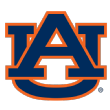
The Tigers lost a ton from last year, yet have continued to fight and scrap in every game. Nobody saw this team being unbeaten entering SEC play, except for maybe Bruce Pearl. Auburn has done it with aggressive offense from the 3-point line, the foul line and the offensive glass. This is a good defensive team, but Auburn has not forced turnovers at a super high rate. Samir Doughty has been the best and most consistent performer.
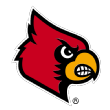
If not for Duke's Vernon Carey Jr., Louisville's Jordan Nwora would be midseason ACC and national player of the year. Nwora has been very consistent and has answered the bell on almost every occasion. The Cards have lost only twice, to Texas Tech, Kentucky and Florida State, and guard play has been the primary culprit in the losses. Louisville can reach the Final Four with this roster, which has size, depth and good skill. But to win it all, and to win the ACC, the Cards need Fresh Kimble and Darius Perry to better manage the point guard position. They are both good guards but need to do a better job delivering the ball and taking care of it. Still, it is amazing Chris Mack has Louisville in contention in just his second season.

The Buckeyes are solid in every way, just not spectacular in many. But tough, deep, selfless and solid can go a long way this year, and the Buckeyes are Final Four capable in this year's field. A major difference has been the transformation of Kaleb Wesson, who is slimmer, more mobile and fully capable of exploiting a mismatch and also getting out on the floor and guarding a ball screen. C.J. Walker and D.J. Carton are two very good guards who are getting better and better in decision-making and picking spots.
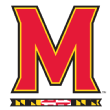
The Terps have not performed to the level Mark Turgeon expects, but things are hardly in bad shape. The only losses have been on the road to Seton Hall and Penn State, both top-30 teams in The Bilas Index. Maryland has a top 25-rated offense and defense (adjusted efficiency), one of only eight teams in the nation that can claim that balance at both ends of the floor. The talented Mitchell twins, both 6-foot-10, transferred out, which can benefit everyone involved. The one thing that has been surprising is the shooting struggles -- particularly Aaron Wiggins and Eric Ayala, but Maryland is also shooting only 31% from deep, ranked in the bottom third of Division I.

10. Dayton Flyers
While The Bilastrator has consistently said that this season reminds him of the 2010 and 2011 seasons with no real dominating teams, this year's Dayton squad reminds The Bilastrator of the Butler teams of 2010 and 2011. Dayton has a superstar in Obi Toppin, The Bilastrator's top breakout performer of the year. Toppin is a lottery pick, and is a prototype NBA star. He can shoot it, he can run and he is a spectacular athlete and finisher. But Dayton is far more than just Toppin. Anthony Grant has terrific guards and plays two point guards at the same time, Rodney Chatman and Jalen Crutcher. Grant also has two of the best "role stars" in Trey Landers and Ryan Mikesell. Dayton's only losses are to Kansas and Colorado, both in overtime. Don't be surprised to see the Flyers in the Elite Eight, if not better.

11. Oregon Ducks
Like most Dana Altman teams, what we see now will be significantly improved by March. But what we see now is pretty darn legit. Oregon has one of the nation's premier winners and competitors in Payton Pritchard, a hard-driving point guard who has only one speed: winning. Pritchard has been reunited with Anthony Mathis, a great shooter and his high school backcourt mate. Up front, Oregon has Chris Duarte to provide a consistent third scorer that can go off, and size at the rim in Francis Okoro, athleticism in C.J. Walker and a new piece in N'Faly Dante. Oregon is the best team in the Pac-12.

In case you don't believe the Aztecs are legit, Brian Dutcher's team is one of two remaining unbeaten teams and has wins over Iowa, Creighton and BYU, all Bilas Index teams. The difference this season has been a top 10-ranked defense and the great play of Malachi Flynn, a transfer from Washington State who hit 30 3-point field goals in his first 13 games. San Diego State has proven to be a good perimeter-shooting team, with Flynn, Jordan Schakel and Matt Mitchell all capable of knocking down open shots.

The Red Raiders, when healthy, are legit. Jahmi'us Ramsey is a future NBA player, and Texas Tech has a championship culture under Chris Beard. The Red Raiders' defense is top 10 in the nation, and the only losses suffered by Texas Tech have been when Ramsey was out.

14. West Virginia Mountaineers
The Mountaineers are back. This is a different type of Bob Huggins team, just as tough and physical defensively but perhaps not as frenetic with full-court pressure. West Virginia does not force turnovers as in past years but defends and rebounds at a high level. Freshman big man Oscar Tshiebwe is a force, putting up 17 points and 17 rebounds in a close loss at Kansas. The Mountaineers' offense suffers from inconsistent shooting and too many turnovers, but the defense will give West Virginia the opportunity to beat almost anyone.

15. Butler Bulldogs
The Bulldogs have been truly outstanding. Butler has not beaten a top-10 team yet but has beaten every good team on its schedule with the exception of Baylor. The Bears clipped Butler by a single point in Waco. Lefty senior Kamar Baldwin has been among the very best players in the nation, and Baldwin plays at an elite level at both ends of the floor. Butler has already beaten Florida, Minnesota, Stanford, Purdue, St. John's and Creighton, all Bilas Index teams.
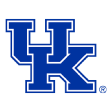
The Wildcats are good and have the chance to get significantly better, but Kentucky is not as crazy-talented as we have come to expect, and its returnees are not as consistent as experienced players should be. Nick Richards has played well since the Louisville game and appears to have had a breakthrough. Tyrese Maxey was great against Louisville, and Immanuel Quickley has been very good of late. But Kentucky has struggled to shoot the ball consistently and has not established an identity yet.
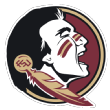
The Seminoles are again deep, long and athletic, but this team is not as big up from as the past few teams in Tallahassee. Yet, in an ACC that is strong at the top and very pedestrian in the middle, Florida State can beat anyone in the league. The convincing win at Louisville served as notice that the Seminoles are legit. Florida State doesn't have a 40% 3-point shooter (with double-digit 3s made) but has six players who shoot at least 35%, led by M.J. Walker, Devin Vassell and Anthony Polite.
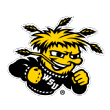
The Shockers are fun to watch and, after a difficult season last year, are back to playing the way Gregg Marshall prefers. Wichita State defends at a high level, is really tough and scores enough to help its defense. Erik Stevenson is a terrific offensive player who can knock down contested shots, and freshman Tyson Etienne is among the top rookie guards in the country. Etienne is a very good shooter, hitting 44% of his deep shots. Wichita State has beaten Oklahoma, Oklahoma State and VCU, all Bilas Index teams.

Jay Wright was named AP Coach of the Decade, and rightfully so. Villanova has established a magnificent basketball culture on the Main Line, and the Wildcats are very good offensively, again. The area in which Villanova can improve is on the defensive end. Villanova has beaten Kansas, Xavier and Mississippi State, all Bilas Index teams, with losses to Ohio State, Baylor and Marquette, also all Bilas Index teams.

20. Memphis Tigers
Penny Hardaway and his staff have done a very good job of bringing along a very young team -- one that lost James Wiseman for the season -- and making it into a contending team. Without Wiseman, freshman big man Precious Achiuwa has blossomed, and Memphis has lost only to Oregon in Portland and to Georgia. The Memphis defense is very good, but the biggest area of concern is how loose Memphis is with the ball. The young Tigers turn the ball over on 22% of their offensive possessions, which is in the bottom-third of Division I. With such a high turnover rate, half coming off of opponent steals and half off of non-steals, it is even more impressive that Memphis is so effective defensively when giving up so many run-outs without being able to set its defense.
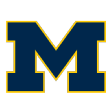
The Wolverines would be rated higher with a healthy Isaiah Livers, Michigan's best shooter and best player. Zavier Simpson is one of the most prolific assist men in the nation, and his running hook is still a marvel. When Livers comes back and is healthy, this is a top-10 team.
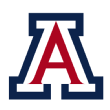
22. Arizona Wildcats
The Wildcats are young, but the talent on this roster is so impressive. And, Arizona does most everything well. Nico Mannion, Josh Green and Zeke Nnaji are super talents who play hard and are very productive. The young Cats have lost only to Baylor, Gonzaga and St. John's, and have their toughest test Thursday at Oregon.
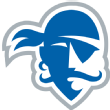
The Pirates have a superstar in Myles Powell and great size, especially with 7-2 shot-blocker Romaro Gill. The Hall can guard and protect the rim, but does not rebound efficiently on either end of the floor. With three of its next four games on the road (Xavier, Butler and St. John's) and Marquette at home in the Big East, this stretch can be big in determining where Seton Hall finishes in Big East play.
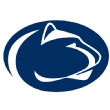
The Nittany Lions have a 9-0 record in Happy Valley to start the season, their best start to a season since 1995-96 when they went undefeated at home (14-0). Mike Watkins ranked eighth in the Big Ten in RPG (9.0), entering Sunday's games, and has logged five double-doubles.

Prior to Friday night's impressive win over Ohio State in Columbus, it had been a tale of two venues for the Badgers this season. When playing at home at the Kohl Center, the Badgers are 7-0 this season, averaging 77.8 PPG with a PPG diff of +19.1. Before the 61-57 win at OSU, the Badgers had been just 1-5 with 58.7 PPG on the road. Since Micah Potter (had to sit out a year to transfer) has hit the lineup, the Badgers are 4-0.
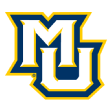
The Golden Eagles can still score from deep, especially Markus Howard, the best shooter and scorer in the country. It has been an extraordinary privilege to watch Howard play over his career at Marquette. Marquette can really shoot the ball and get to the foul line, but when not fouled, the Golden Eagles are not as efficient finishing in the paint and around the rim. The biggest difference in Marquette this season is the improved toughness and defense. This team guards you, and is among the top 40 defenses in the country.

27. Iowa Hawkeyes
Luka Garza is one of only two players in the nation averaging at least 20 PPG and 10 RPG (min. four games), joining BYU's Yoeli Childs. Garza leads the Big Ten in scoring (22.5), is second in double-doubles (8) and is third in rebounds (10.1)

28. VCU Rams
Marcus Santos-Silva led the team in points (12.5) and rebounds (8.5) entering Sunday's game against George Mason, and his .606 FG% trailed only Dayton's Obi Toppin (.619) for best in the Atlantic 10.

After losing key contributors from their 2019 national championship team in Kyle Guy, De'Andre Hunter and Ty Jerome, the Cavaliers have really struggled to score. Only Mamadi Diakite (13.2 PPG) and Braxton Key (10.1 PPG) are double-figures scorers this season and the Cavs' overall 55.9 PPG ranks near the bottom of D-I. But as usual with a Tony Bennett-led team, the defense is leading the way. They lead the nation in adjusted defensive efficiency (82.0).

After an offseason that saw Arkansas hire Eric Musselman away from Nevada, the Razorbacks have started the season 12-1 with big wins at Georgia Tech and at Assembly Hall vs. Indiana. Their success is due in large part to their defense; as they are only one of 18 teams in D-I to hold opponents under 60 PPG, while ranking fifth in D-I in points off turnovers per game (19.9).
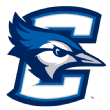
The Bluejays are 10-0 at home to start the season, their best home start since 2017-18 when they opened 13-0. Sophomore guard Marcus Zegarowski is third in the Big East in scoring (18.1) and Creighton as a team averages 78.3 points.

The Wolfpack rank second in the ACC in scoring (80.2). Markell Johnson is averaging 12.9 PPG, 6.8 APG and 5.0 RPG. He is one of seven players in the nation averaging a 10/6/5 line. He ranks second in the ACC with 89 assists.

The Musketeers are led by a three-headed monster attack in Naji Marshall, Paul Scruggs and Tyrique Jones. The three have accounted for 54% of Xavier's shot attempts and 58% of Xavier's points. Jones is one of 14 players in D-I this season averaging 13 PPG and 10 RPG (min. six games) while leading scorer Marshall ranks sixth in the Big East in PPG.

34. Florida Gators
Kerry Blackshear Jr. has four games of at least 20 points and 10 rebounds this season, the most in the SEC. His seven double-doubles are tied for the most in the SEC as well. The Gators are figuring it out offensively, going over 100 points for the second straight game in Saturday's 104-98 double-overtime win over Alabama.

The Bilastrator was the lone voice in the wilderness before the season, stating that Colorado could win the Pac-12. With McKinley Wright IV and Tyler Bey, Colorado has the talent and experience necessary to capture the league crown. A win over Oregon was another positive step, but the Buffs couldn't close against Oregon State's 1-3-1 zone and let a win turn into a loss. With road trips to Arizona and Los Angeles looming, Colorado needs to make its best push now. This is an NCAA tournament team.
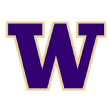
Freshman Isaiah Stewart is one of two players in the nation averaging 19 PPG and 8 RPG on 60% FG pct. His big-game capability has already been displayed this season, as he has two games with 25 points and 13 rebounds.
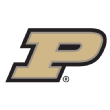
The Boilermakers appear destined to remain one of the tougher teams in the country to figure out. Matt Painter's group can beat anyone -- see a 69-40 blowout of Virginia on Dec. 4 -- and lose to anyone, as evidenced by a 70-56 loss to a rebuilding Nebraska team. When 7-foot-3 Matt Haarms plays as he did in a 26-point, 10-of-13 shooting performance against Minnesota on Jan. 2, Purdue is going to be difficult to beat.
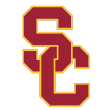
38. USC Trojans
The Trojans went 11-2 in nonconference play, the third time under Andy Enfield with 11 or more wins in nonconference play (13-0 in 2017 and 11-2 in 2016). Before that, USC had not won 11 nonconference games since the 1976 season. Freshman forward Onyeka Okongwu is one of two freshmen averaging at least 17 PPG and 9 RPG (min. five games) entering Sunday's games. Okongwu had three games with 25 points and 10 rebounds, most among D-I freshmen.
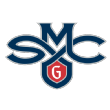
No one shoots the 3 better than the Gaels, who lead Division I with a 41.4% clip from beyond the extended arc. Jordan Ford, Tanner Krebs and Malik Fitts can all beat you from deep. Randy Bennett's group is also top 10 in the country in adjusted offensive efficiency (113.1), turnover percentage (14.9) and steal percentage (5.8).
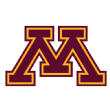
The Gophers have lost games, but every team Minnesota has lost to is good. Daniel Oturu and Marcus Carr are a legit inside-outside combo, and Richard Pitino's team is far better than its record (8-6) would indicate. The win over Ohio State showed what the Gophers are capable of, and the double-overtime loss at Purdue was emblematic of the kind of losses Minnesota has suffered. But, because the Big Ten is so tough, there are more losses looming, but also more opportunities for quality wins.
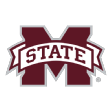
41. Mississippi State Bulldogs
Before Saturday's loss to Auburn, the Bulldogs had shot 48.1% from the field, which ranked second in the SEC. Sophomore forward Reggie Perry leads the SEC in rebounding at 10 per game, and is the only player in the conference averaging at least 15 PPG and 10 RPG.

42. Indiana Hoosiers
The Hoosiers have four scorers who average 10-plus PPG. The leader of those four is freshman Trayce Jackson-Davis, who averages 14.8 PPG on 64.3% shooting. Additionally, IU loves to play down low, ranking near the top 10 in D-I in points per game in the paint.

Before its disappointing home losses to Seton Hall and Providence to open Big East play, the Blue Demons posted a 12-2 start that was their best since 1986-87. If they can turn it around, a program that last reached the NCAA tournament in 2004 will get a résumé boost from its 5-0 record vs. the Big Ten, ACC and Big 12, including big wins against Iowa and Texas Tech. The strength of the team is inside, where DePaul entered play on Saturday tied with St. John's for the most PPG in the paint in the Big East (36.7), and ranked 18th overall in D-I.

44. BYU Cougars
Since Yoeli Childs returned from suspension on Dec. 4, the Cougars are 6-1. Childs has averaged 20.9 PPG and 10.1 RPG. (The only other player in D-I averaging 20 and 10 is Iowa's Luka Garza)
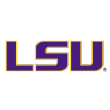
45. LSU Tigers
Offense is the engine that powers the Tigers this season. They ranked tied for 22nd in D-I PPG (80.8) entering Sunday's play, and scored over half of their points per game in the paint. The balanced Tigers have five players averaging over 10 PPG.

Second-year coach Craig Smith and the Aggies have raced to a 13-4 record, and are doing so on the glass. They led D-I in total rebounds entering Saturday's loss to San Diego State, and that effort on the glass had led them to score 13.3 second-chance PPG, 16th-best in D-I.
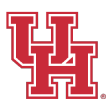
47. Houston Cougars
Houston's win over a good Washington team in Hawaii on Christmas Night shows that the Cougars are starting to figure things out. Kansas transfer Quentin Grimes is getting more comfortable, and like most Kelvin Sampson teams, this one hits the offensive glass. UH's 40.2 offensive rebound percentage ranks near the top of college basketball.

Projected top-5 pick Cole Anthony (knee) has not played since Dec. 8, and UNC's chances to reach the NCAA tournament have dwindled without him and guard Anthony Harris, who tore his right ACL in his right knee and will miss the rest of the season. In their first nine games with Anthony, UNC held opponents to 66 PPG and went 6-3 but are 2-3 so far without him

49. Oklahoma Sooners
The Sooners have three players averaging at least 14 PPG in Kristian Doolittle, Austin Reaves and Brady Manek. Doolittle averages 9.2 RPG and is the only player in the conference averaging at least 16 PPG and 9 RPG.
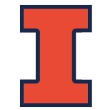
Illinois entered play Sunday as the top team in Division I rebound margin, grabbing 41.7 rebounds per game while yielding just 30.1 boards per outing. Big man Kofi Cockburn (15.2 PPG, 9.6 RPG entering Sunday's games) has been one of the nation's most impressive freshmen.

Coach John Brannen has some good wins on the résumé in his debut season with the Bearcats, including a decisive victory over Tennessee and a sneaky-good win over Bilas Index team Vermont. But UC has also lost to Colgate, Bowling Green and Tulane, and needs more consistent production from returning star Jarron Cumberland.

52. Furman Paladins
The Paladins are off to a 3-0 start in a very good Southern Conference, with Saturday's win over East Tennessee State speaking well of their chances to reach the NCAA tournament. Jordan Lyons' 17.4 PPG lead the team and rank fourth in the conference. Lyons attracted attention with a 40-point effort against VMI on New Year's Day.

Before Saturday's blowout at Texas Tech, the Cowboys had been 8-0 when Isaac Likekele played. Likekele leads the team in steals (2.3) and assists (4.6). Before Saturday, OSU was holding opponents to just a .368 FG% which was the 12th-lowest nationally and second in the Big 12.
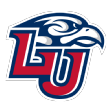
54. Liberty Flames
Off to their best start (16-1) since joining D-I in 1988, the Flames are looking to build off last season when they won 29 games including their first win in the NCAA tournament. Though the Flames score under 70 PPG (69.0), they hold opponents to just 51.8 PPG, the second-best mark in D-I behind only Virginia.

55. East Tennessee State Buccaneers
Before Saturday's disappointing loss at Furman, the Bucs ranked the top two in the Southern Conference in rebounds, steals, blocked shots, and points scored while allowing opponents to score 62 PPG, which was the second-lowest mark in the conference. Opponents were shooting only .269 from 3-point range against them, which suggests ETSU will bounce back.
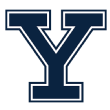
56. Yale Bulldogs
Yale lost its top three scorers from last season's NCAA tournament team, but the Bulldogs are thriving in different ways this season. Yale is holding opponents to just 26.2% shooting from 3-point range -- a top-10 figure nationally -- and forward Paul Atkinson is among Ivy leaders with averages of 16.6 points and 7.2 rebounds.
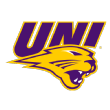
The Panthers attracted attention with impressive nonconference wins over Colorado (in Boulder) and South Carolina, and have now turned their attention to the Missouri Valley Conference season. Junior Guard Trae Berhow is shooting 44.8% from 3-point range, a top-100 figure in the nation.
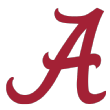
Under first-year head coach Nate Oats, Bama is really ramping up its offensive production. Last season, the Tide averaged 72 PPG. This season, Oats has them producing at 83.9 PPG, a top-10 figure nationally. The catalysts behind the high-scoring team are Kira Lewis Jr. and John Petty, both averaging 16.6 PPG.
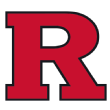
An all-around solid team, Rutgers gets it done on both sides of the ball. The Scarlet Knights rank in the national top 100 in both offensive and defensive adjusted efficiency, including 25th on the defensive end (89.6) entering Sunday's games (89.6).
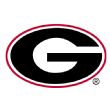
60. Georgia Bulldogs
Projected top-5 pick Anthony Edwards is among the nation's highest-scoring freshman at 18.3 PPG. He has scored 20-plus points in six games this season, and it was a good sign for the Bulldogs that they were able to defeat a ranked Memphis team on Saturday in a game in which Edwards scored only 13 points.
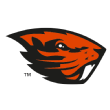
The Beavers are 11-3 after 14 games, and have the offense to make the NCAA tournament. It looked like a lost trip to Utah and Colorado before Wayne Tinkle went to a 1-3-1 zone late in Boulder and finished on a 23-5 run to beat Colorado. Tres Tinkle rightfully gets the ink, but Ethan Thompson is a terrific point guard, Kylor Kelley is one of the nation's best shot-blockers and rim runners, and lefty Zach Reichle makes winning plays.
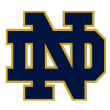
The Fighting Irish have played well since a surprising loss to Boston College on Dec. 7, going 4-1 over that stretch including a fine offensive performance in an 88-87 win at Syracuse on Saturday. Big man John Mooney has logged eight consecutive double-doubles for Mike Brey's squad.
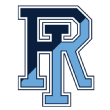
Fatts Russell, leads the Atlantic 10 in scoring, entering Sunday's play averaging 20.3 PPG. He was one of two players in the nation averaging at least 20 PPG and 5 APG (Jermaine Marrow of Hampton is the other).

At 12-2, the Cardinal are off to their best 14-game start to the season since 2011-12. Similar to a few teams on this list, the success is due in large part to defense and hustle. Stanford is giving up only 58.3 PPG, while scoring 19.9 PPG off turnovers (top 10 in D-I). And though the Cardinal average only 72 PPG, they do have two scorers over 15 PPG they can rely on in Oscar da Silva and Tyrell Terry.

After finishing with 14 wins in Jeff Capel's first season, the Panthers already have 10 wins this season -- though Saturday's home loss to Wake Forest was disappointing. Defense leads the way for the Panthers. who also have four players (Trey McGowens, Xavier Johnson, Ryan Murphy and Justin Champagnie) averaging double figures in scoring.

66. Richmond Spiders
The veteran Spiders are off to a 2-0 start in the Atlantic 10 and look capable of competing with Dayton and VCU at the top of the league. Chris Mooney's group shoots it well from 3 (38.2%) and the line (80%), and Wagner transfer guard Blake Francis has reached double figures in scoring in all but one game this season.

The Red Storm were picked to finish last in the Big East as Mike Anderson took over for Chris Mullin this season, and though they've opened league play with losses to quality teams in Butler and Xavier, they will be a very tough out in the Big East. LJ Figueroa was outstanding in the Johnnies' biggest wins this season, against West Virginia and Arizona.

John Becker's Catamounts are again the class of the America East, and a win over St. John's and narrow loss to Virginia offers evidence of how tough this team could be in March. Anthony Lamb, who is capping off a fine career in Burlington, scored 30 points and bombed 7-of-14 3-pointers against the vaunted Cavaliers defense.
